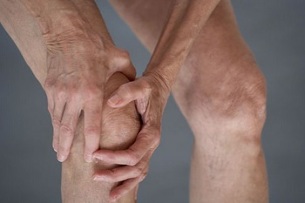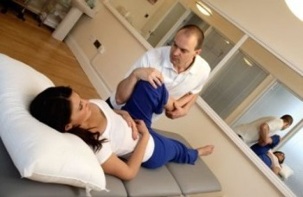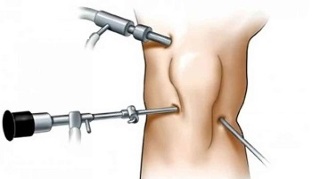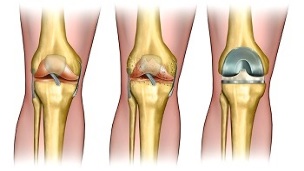2 degrees of knee joint osteoarthritis can not only reduce the patient's motor activity, but also worsen their overall quality of life. The reason for this may be not only pain and inability to exercise, which until recently seemed insignificant.
By comparing the changes that have occurred between the initial stage of the disease and its second stage, a person begins to understand: without proper treatment, the situation will only get worse.
Causes of the disease
Very often, the reason for the transition of the disease to stage 2 is an irresponsible attitude to treatment and non-compliance with the doctor's recommendations regarding physical activity and lifestyle changes.
In a joint already affected by disease, blood circulation and metabolic processes are slowed to the point that the tissues cannot receive nutrients and oxygen without outside help. In case of refusal of treatment or postponement "for later", there is an acceleration of the destructive processes in the joint and, as a consequence, the transformation of the disease from its mild stage to a more serious one.
Symptoms
Stage 2 of knee osteoarthritis is characterized by the following manifestations:
- increased pain: pain attacks acquire a certain regularity (after a night's sleep, long rest period, physical exertion);
- joint stiffness, usually in the morning, which disappears after a short walk;
- the knee joint increases in size, its relief softens; all the physiological bumps and depressions of the joint are no longer defined. In a standing position, this can appear as skin "hanging" over the kneecap. In a squatting position, it becomes evident that one knee (affected by gonarthrosis) is much larger than the second, healthy and has a spherical shape;
- when moving the knee, a characteristic crunch can be heard;
- The flexion and extension movements of the joint are severely limited.
People with grade 2 knee osteoarthritis can rarely do without painkillers, as knee pain begins to bother even during periods of rest. This is due to spike-shaped growths in the bone tissues of the joint, which irritate and injure all the structures of the knee.
How the doctor makes this diagnosis
In most cases, a patient complaining of deteriorating health has already been diagnosed with knee osteoarthritis, and the treating physician may order an X-ray examination to assess the changes in the joint.
If the doctor has reason to suspect that there are other diseases associated with knee OA, a CT scan, MRI scan, and laboratory blood tests may be recommended. This is necessary to exclude infections that can penetrate the joint through the bloodstream and a complicated course of gonarthrosis, with damage to soft tissues.
Complications of the disease

In the absence of treatment or an insufficiently responsible attitude towards it, grade 2 gonarthrosis can quickly overcome the last "stage" and move on to the final stage, in which pain becomes a constant companion, and the joints undergo irreversible changes and deformations.
Additionally, weakened joint tissues become vulnerable to infection, and any systemic viral or bacterial disease can cause serious complications during knee OA. The most common, but no less dangerous, is infection of the joint cavity with the formation of purulent content, which can spread to soft tissues - muscles, skin.
Treatment
In treating grade 2 knee osteoarthritis, the focus is on relieving pain, slowing or completely stopping the degenerative process in the joint, preventing complications, and improving knee mobility.
Medications
The drugs used in the treatment of second degree knee osteoarthritis are divided into the following groups:
- Anti-inflammatory drugs.These include the latest generation of non-steroidal anti-inflammatory drugs (NSAIDs), which eliminate the inflammatory process in the joint and, as a result, reduce pain.
- Chondroprotectors.This group of drugs helps protect cartilage tissue from further destruction and improves the regeneration processes in them.
- Hyaluronic acid preparationsthat are analogous to the natural lubrication of the inner surface of the joint. By reducing friction in the knee joint, these medications prevent further wear and tear on the cartilage. In some cases, intra-articular injections of hyaluronic acid are indicated (for example, with very poor blood circulation in the joint, which prevents other forms of the drug from reaching the affected tissues).
- Helps.These include vitamin preparations, immunostimulants, bioactive plant extracts (aloe, echinacea, etc. ), which are designed to improve blood circulation in joint tissues and thus accelerate metabolic processes in them.
Physiotherapy, massages, exercise therapy

Treatment methods such as physical therapy, massage, and exercise therapy can be considered adjuncts in the treatment of second degree knee osteoarthritis and are rarely used as stand-alone treatment methods.
Physiotherapy (UHF, phonophoresis, ultrasound therapy, magnetotherapy) is used to improve blood circulation in the joint and stimulate the recovery processes in it.
One of the most effective physiotherapeutic procedures for the treatment of osteoarthritis is MLS laser therapy with the ability to regulate the power of laser radiation. The therapy uses constant, pulsating wavelengths, thereby achieving deep tissue penetration and a pronounced clinical effect. The MLS laser treats all diseases of the joints, osteochondrosis, hernias and other diseases of the musculoskeletal system.
It is recommended to perform the massage in courses of 10-15 sessions, one session daily or every other day. Massage, which improves the blood supply in the joint, normalizes the metabolic processes in it and provides a more effective effect of drugs on the tissues affected by the disease.
In the diagnosis of osteoarthritis of the knee joint of the second degree, massages with the use of medications (chondroprotectors, anti-inflammatory or irritant ointments, external cooling agents and anesthetics) are often prescribed. The choice of a specific drug is left to the doctor; the appointment depends on the clinical picture of the disease, the severity of the symptoms and other factors.
Physiotherapy exercise complex is assigned to attending physicians after evaluating the effectiveness of drug treatment and is selected taking into account the individual characteristics of the course of the disease and the general health of the patient.
Lifestyle correction
Lifestyle correction is one of the most important conditions for effective treatment. With second degree knee osteoarthritis, you must adhere to the following rules:
- Reduce the load on the diseased joint.To do this, orthopedic canes are used, which allow the load to be distributed during movement in such a way that the knee joint is minimally affected. It is important to choose the right cane for your height; It should be from the wrist to the floor when standing.
- Diet.For this disease, it is recommended to reduce the consumption of foods that contain animal proteins (eggs, meat, fish, whole milk), carbohydrates (baked goods, sweets) and any food and drink that contains synthetic flavors, sweeteners, preservatives.
- Weight loss.Obesity is one of the risk factors that increases the probability of metabolic disorders in all tissues, including the tissues of the joints. Also, being overweight puts unnecessary strain on the joints.
Surgical treatment
Surgical treatment can be divided into two types: arthroscopy and endoprosthesis.
Each operation has its own list of indications for which the intervention will be most effective.
Arthroscopy

Arthroscopy is a low-trauma surgical method in which the operation is performed using miniature video, surgical, and lighting devices inserted into the joint cavity through small punctures.
Reading:
- presence of bone neoplasms (osteophytes) that impede joint mobility;
- joint tissue deformities, which can be corrected without large-scale surgical intervention;
- the need for chondroplasty, which can significantly slow down the progress of the disease and restore the joint's ability to move.
Contraindications to arthroscopy are acute infectious diseases, blood coagulation disorders, and a small range of motion in the joint; the inability to fully extend or flex the joint does not allow the surgeon to perform the necessary manipulations.
Endoprosthesis
Endoprosthesis: replacement of a knee joint with an artificial one made of durable and hypoallergenic material, identical in structure to natural bone tissues.
Over time, the prosthesis takes over all the functions of the "native" joint and allows you to return to normal life.
Reading:
- no effect after a long course of conservative treatment;
- rapid progression of the disease;
- Changes in the joint significantly alter the patient's motor activity, cause severe and frequent pain and / or a risk of disability.

Among the absolute contraindications are only systemic diseases that make any surgical manipulation impossible.
The treating physician weighs the risks and benefits of surgical treatment and, based on the conclusions reached, makes a decision on the need for surgery or the continuation of conservative treatment.



















































